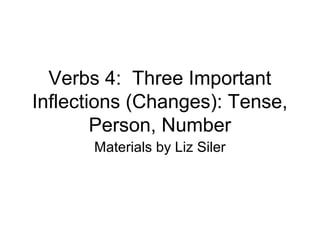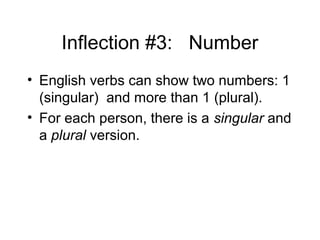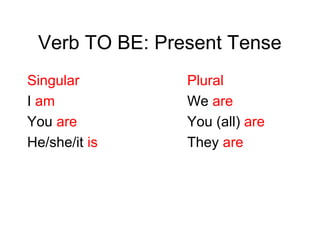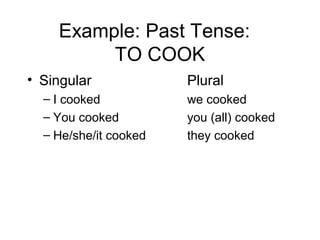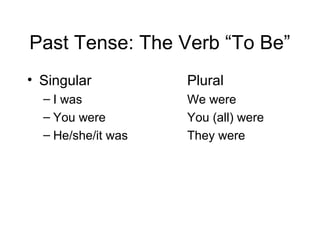This document discusses three important verb inflections in English: tense, person, and number. It explains that verbs are inflected for past and present tense, but not future. The future is expressed using modal auxiliaries. Present tense inflection depends on the person and number of the subject. Only third person singular subjects take the "s" form. Verb inflection also varies by singular and plural forms. The verb "to be" is an exception and has its own inflections for tense, person and number.
